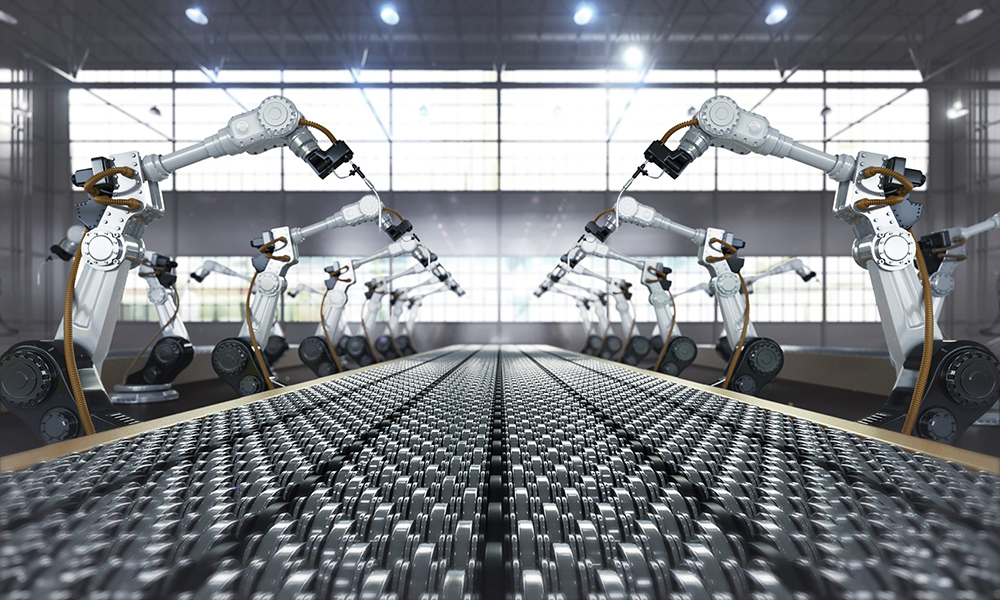
富国银行(Wells Fargo)表示,自20世纪40年代以来,企业支出在美国经济中所占的比重始终相对稳定,但近几年这种情况正在发生翻天覆地的变化。
经济学家香农·塞里·格雷因和蒂姆·昆兰在上周三发布的一份报告中表示,八十年前,投资的GDP占比一直在10%至15%之间,最近几年的平均年增长率为5%,他们表示总体数据“并不像表面上那么简单”,背后还有更多故事。
富国银行在报告中表示:“简而言之,企业支出的构成正在悄然发生一场革命。曾经人们一提到‘资本支出’这个词,就会想到笨重的机械设备。但现在它们正在被生成式人工智能和软件投资所取代。”
富国银行表示,上世纪90年代,设备支出占资本支出的一半以上。但20多年后,设备支出的占比下降,而知识产权支出的占比却有所增长。
目前占比最大的是“知识产权产品”投资,包括软件、研发和娱乐、文学与艺术内容等。本轮周期的资本支出增长几乎全部来自知识产权产品投资。
富国银行表示:“企业过去在分配资金时,对知识产权产品的投资曾经是次要选择,现在却变成了主要投资方向。近几年,企业的投资优先级从实物资本向软件转移,影响了设备采购和整体制造业活动。”
事实上,美国供应管理协会(Institute for Supply Management)的制造业指数近几个月持续低迷,而本月令人意外的疲软数据引发了恐慌,人们担心美国经济可能正在走向衰退,并且全球股市即将暴跌。
但如果只关注制造业,可能会错过其他增长强劲的领域。据富国银行统计,过去五年,知识产权产品支出增长了超过30%,而设备支出基本持平。
早在OpenAI的ChatGPT在2022年引发人工智能热潮之前甚至在疫情之前,这种趋势就已经存在。但经济学家们表示,当前这波投资热潮,是自20世纪90年代中期科技驱动的繁荣以来,增长速度最快的一次。
富国银行补充道:“知识产权产品支出早在新冠疫情之前就已经呈现出增长的势头,但最近的增长速度大幅加快。”
在知识产权产品支出中,软件支出的表现尤其突出。上个季度,软件支出较疫情之前增长了近60%,目前其增长速度是研发的三倍以上。最近几年,软件已经超过研发,成为最大的支出类别。
事实上,微软(Microsoft)、Alphabet和Meta等科技巨头大力投资人工智能,这意味着它们将继续在该领域投入数十亿美元。在第二季度,这三家公司在基础设施、土地和驱动人工智能服务的芯片方面共投资405亿美元,而且每家公司均表示明年只会增加投资。
富国银行表示,在软件领域的大力投资,是人工智能应用的早期信号,可能带来生产力的提升。
除了知识产权产品投资以外,企业还在其他技术相关领域进行投资,包括高科技设施和信息处理设备等。
经济学家们表示:“没有人能保证以技术为主的投资能够带来生产力繁荣,但只要能实现这个效果,就一定有利于发展。生产力可以提高生活水平和实际收入,进而刺激消费和增加利润。”(财富中文网)
译者:刘进龙
审校:汪皓
富国银行(Wells Fargo)表示,自20世纪40年代以来,企业支出在美国经济中所占的比重始终相对稳定,但近几年这种情况正在发生翻天覆地的变化。
经济学家香农·塞里·格雷因和蒂姆·昆兰在上周三发布的一份报告中表示,八十年前,投资的GDP占比一直在10%至15%之间,最近几年的平均年增长率为5%,他们表示总体数据“并不像表面上那么简单”,背后还有更多故事。
富国银行在报告中表示:“简而言之,企业支出的构成正在悄然发生一场革命。曾经人们一提到‘资本支出’这个词,就会想到笨重的机械设备。但现在它们正在被生成式人工智能和软件投资所取代。”
富国银行表示,上世纪90年代,设备支出占资本支出的一半以上。但20多年后,设备支出的占比下降,而知识产权支出的占比却有所增长。
目前占比最大的是“知识产权产品”投资,包括软件、研发和娱乐、文学与艺术内容等。本轮周期的资本支出增长几乎全部来自知识产权产品投资。
富国银行表示:“企业过去在分配资金时,对知识产权产品的投资曾经是次要选择,现在却变成了主要投资方向。近几年,企业的投资优先级从实物资本向软件转移,影响了设备采购和整体制造业活动。”
事实上,美国供应管理协会(Institute for Supply Management)的制造业指数近几个月持续低迷,而本月令人意外的疲软数据引发了恐慌,人们担心美国经济可能正在走向衰退,并且全球股市即将暴跌。
但如果只关注制造业,可能会错过其他增长强劲的领域。据富国银行统计,过去五年,知识产权产品支出增长了超过30%,而设备支出基本持平。
早在OpenAI的ChatGPT在2022年引发人工智能热潮之前甚至在疫情之前,这种趋势就已经存在。但经济学家们表示,当前这波投资热潮,是自20世纪90年代中期科技驱动的繁荣以来,增长速度最快的一次。
富国银行补充道:“知识产权产品支出早在新冠疫情之前就已经呈现出增长的势头,但最近的增长速度大幅加快。”
在知识产权产品支出中,软件支出的表现尤其突出。上个季度,软件支出较疫情之前增长了近60%,目前其增长速度是研发的三倍以上。最近几年,软件已经超过研发,成为最大的支出类别。
事实上,微软(Microsoft)、Alphabet和Meta等科技巨头大力投资人工智能,这意味着它们将继续在该领域投入数十亿美元。在第二季度,这三家公司在基础设施、土地和驱动人工智能服务的芯片方面共投资405亿美元,而且每家公司均表示明年只会增加投资。
富国银行表示,在软件领域的大力投资,是人工智能应用的早期信号,可能带来生产力的提升。
除了知识产权产品投资以外,企业还在其他技术相关领域进行投资,包括高科技设施和信息处理设备等。
经济学家们表示:“没有人能保证以技术为主的投资能够带来生产力繁荣,但只要能实现这个效果,就一定有利于发展。生产力可以提高生活水平和实际收入,进而刺激消费和增加利润。”(财富中文网)
译者:刘进龙
审校:汪皓
Business spending as a share of the U.S. economy has been relatively steady since the 1940s, but it’s undergone a total transformation in recent years, according to Wells Fargo.
Going back eight decades, investment has been between 10% and 15% of GDP and grew at an average annually rate of 5% in recent years, economists Shannon Seery Grein and Tim Quinlan said in a note Wednesday, calling the top-line numbers a “façade of plainness.” But there’s more to the story.
“In short, the composition of business spending has undergone a quiet revolution,” Wells Fargo said. “The term ‘capex’ used to conjure images of heavy machinery and equipment. That is being replaced with generative AI and software.”
In the 1990s, equipment comprised more the half of capital expenditures, the bank said. But in the 20 years after that, equipment’s share of spending declined while the share going toward intellectual property climbed.
Investment in “intellectual property products” (IPP)—which includes software, R&D as well as entertainment, literary and artistic content—now makes up the biggest slice and accounts for nearly all the growth in the current cycle.
“What was once an afterthought for businesses calibrating investment dollars has become the primary source of investment,” Wells Fargo said. “These shifting priorities to software over physical capital have weighed on purchases of equipment and dented overall manufacturing activity in recent years.”
In fact, the Institute for Supply Management’s manufacturing index has been anemic for months, and a surprisingly weak reading earlier this month triggered fears the economy may be headed for a recession and a global stock bloodbath.
But looking at just the manufacturing side leaves out strength elsewhere. In the last five years, IPP spending jumped more than 30%, while equipment spending was essentially flat, according to Wells Fargo.
The trend predates the artificial intelligence frenzy sparked by OpenAI’s ChatGPT in 2022 and even the pandemic. But the current spending wave is the fastest since the tech-fueled boom in the mid-1990s, the economists said.
“Even as IPP outlays were gaining momentum ahead of the pandemic, growth has been turbocharged recently,” the bank added.
And within IPP, software spending in particular stands out. Last quarter, it was nearly 60% above pre-pandemic levels and is currently running more than three times faster than R&D, which has been eclipsed by software as the largest category in recent years.
Indeed, tech giants investing heavily in AI like Microsoft, Alphabet and Meta signaled they will continue to pour billions into the space. The trio spent a combined $40.5 billion on the infrastructure, land, and chips that power their AI services during the second quarter. And each company indicated that those numbers will only get bigger next year.
Aggressive software investment is an early sign of AI adoption and could lead to improvements in productivity, Wells Fargo said.
Outside of IPP, business are also spending in other tech-related areas, including on high-tech facilities and information processing equipment.
“There is no guarantee this tech-focused spending will elicit a productivity boom, but to the extent that it does, it would be good for growth,” the economists said. “Productivity can boost living standards and real income, which can fuel consumption and lift profits.”






